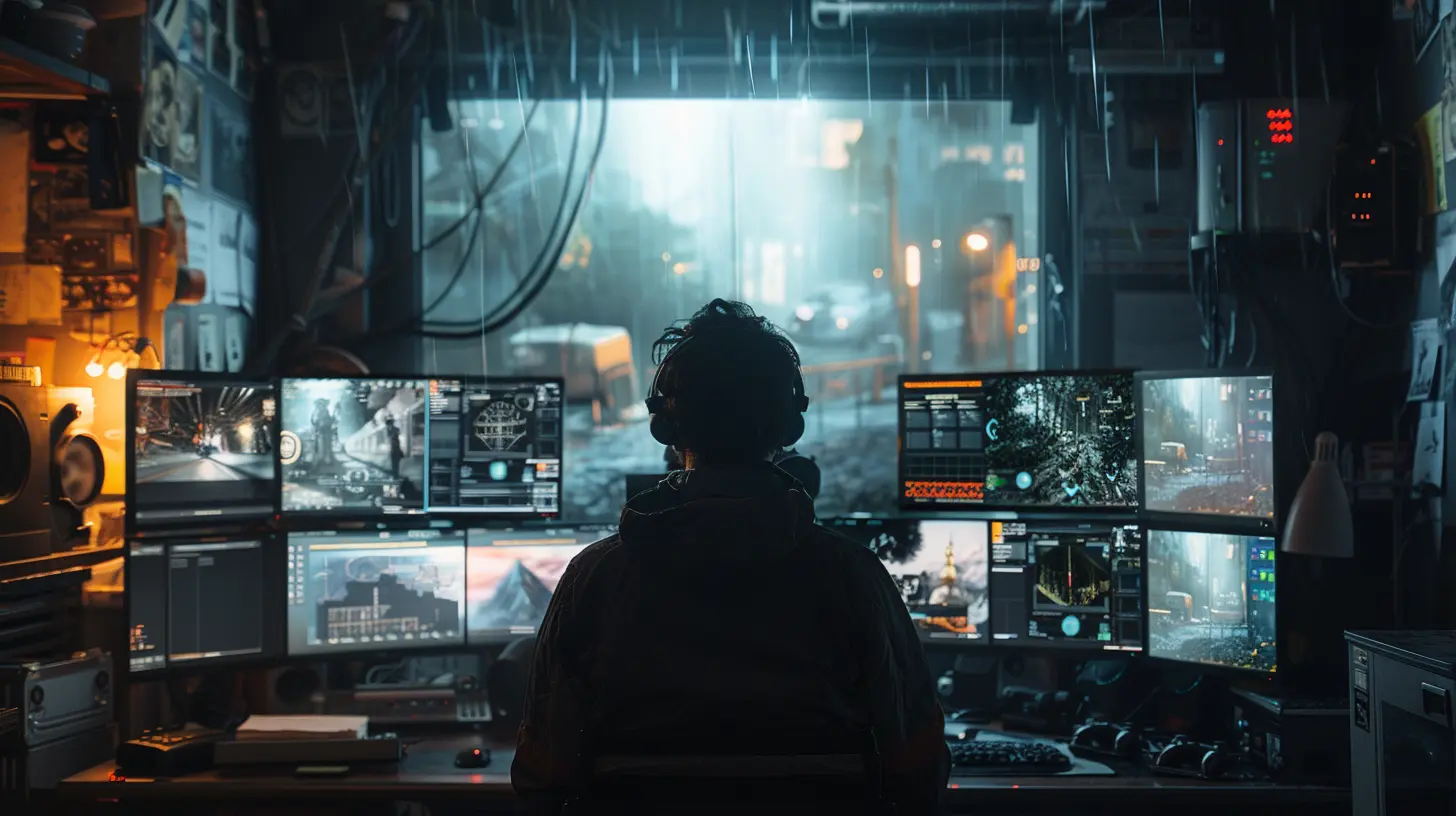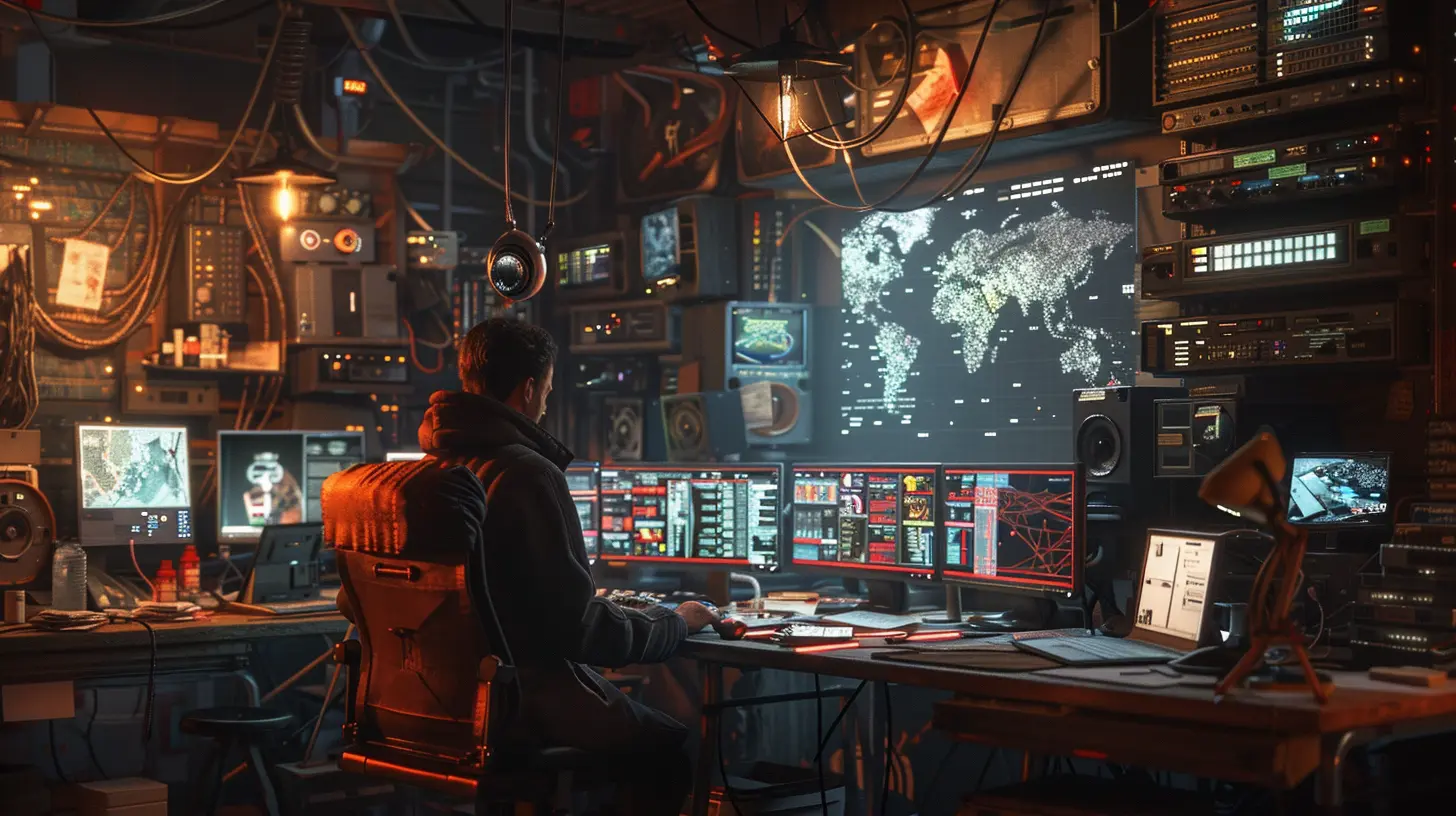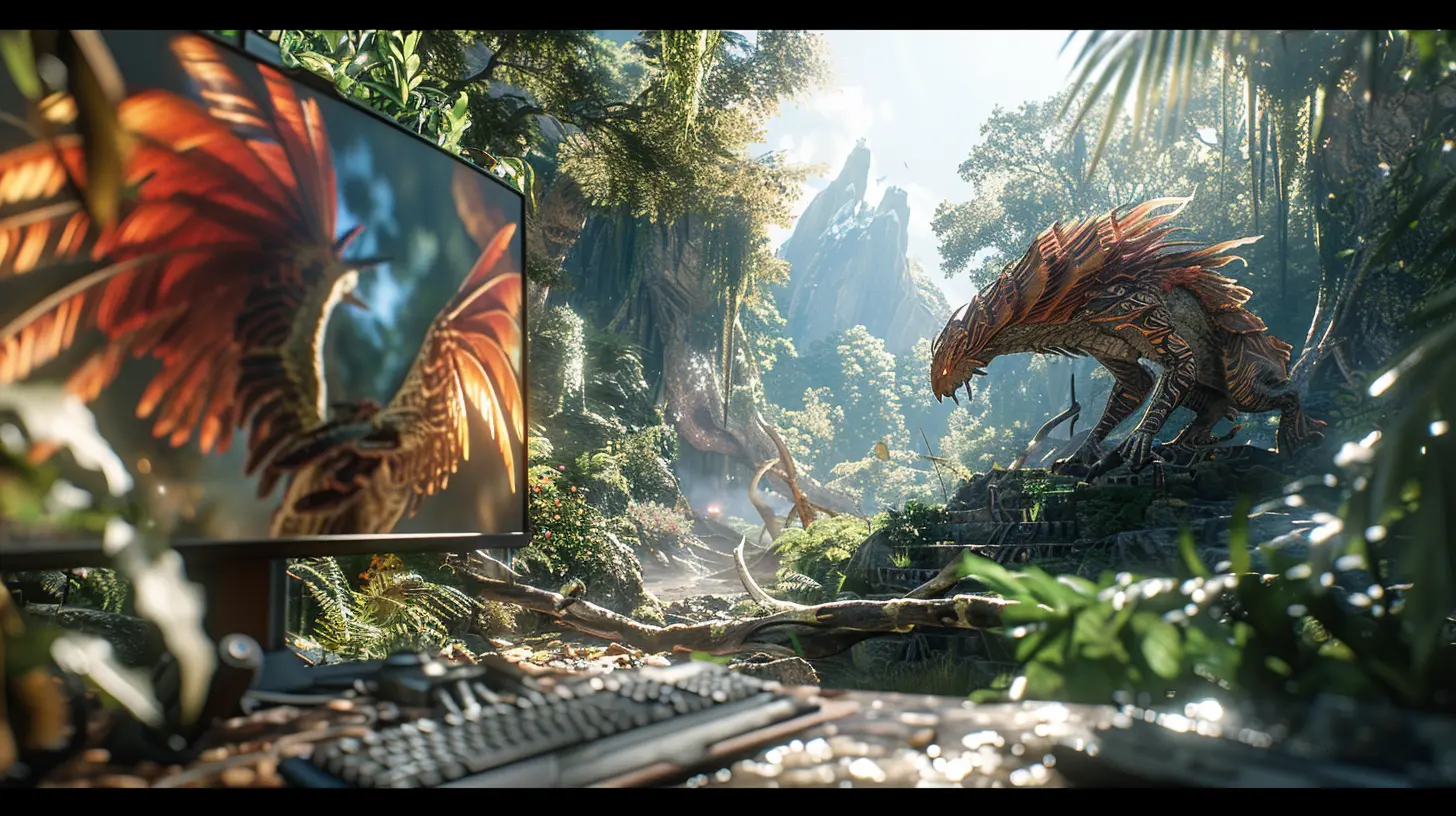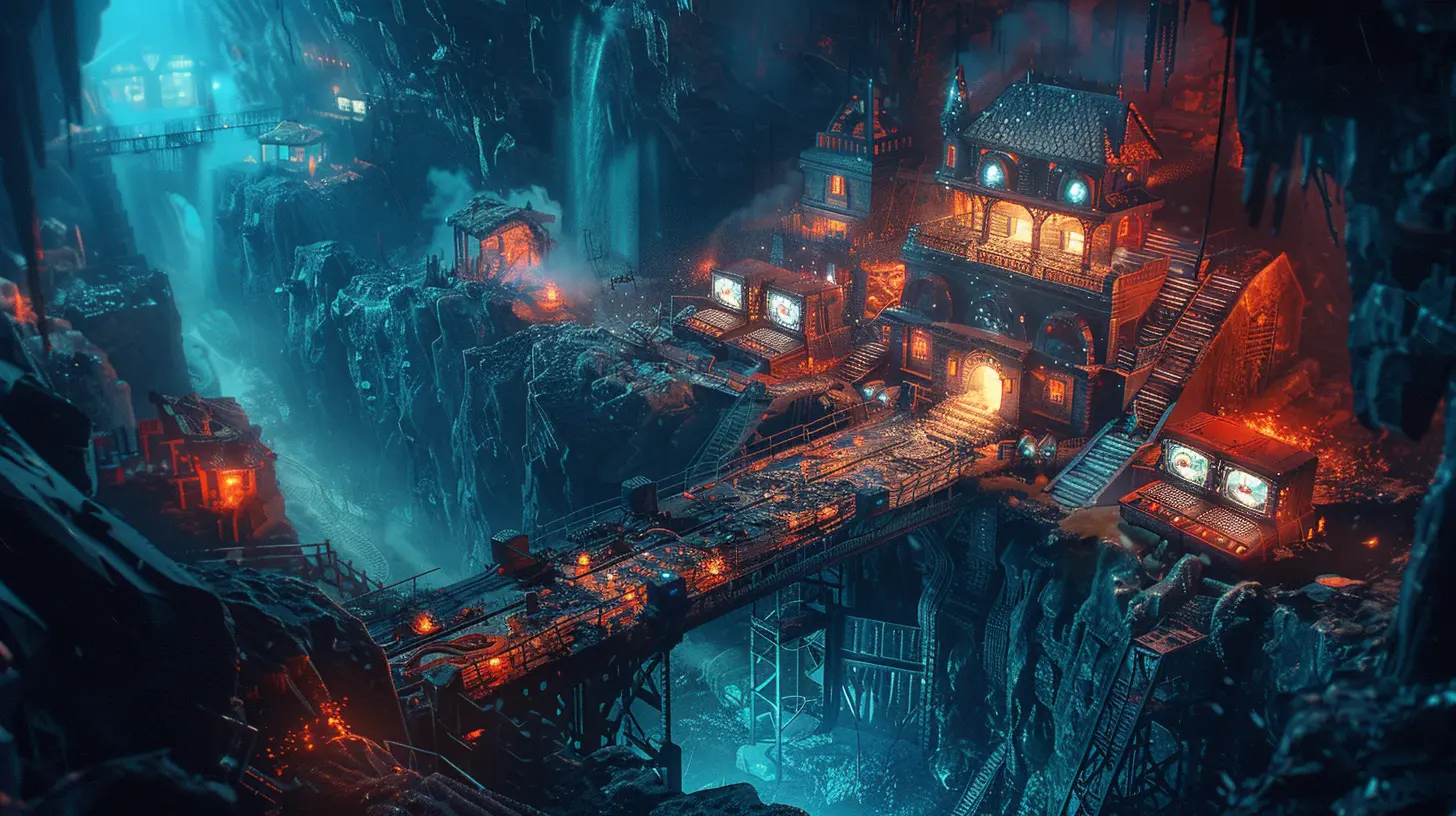From Studio to Screen: How PC Games Are Made
6 February 2025
Have you ever sat down to play the latest PC game, smashing buttons with the confidence of a caffeine-fueled gamer, and thought, “How on Earth do they actually make these things?” Well, my friend, strap in. We’re about to dive deep into the pixelated rabbit hole of how your favorite PC games go from a studio’s fever dream to your gaming setup—complete with RGB lights that scream, “I AM A SERIOUS GAMER.”
Spoiler alert: making video games isn’t just about drinking energy drinks and yelling “It’s not a bug; it’s a feature!” Although, let’s be honest—there’s definitely some of that. 
The Brainstorming Phase: AKA “Wouldn’t It Be Cool If…”
Every great game starts with a simple idea. Sometimes it’s a “what if” question. What if you could shoot fireballs from your hands? What if animals could run farms? What if plumbers fought turtles?This phase is like a wild brainstorming session where everything is fair game. Developers sketch their ideas, scribble on whiteboards, and argue about whether spiders are scarier than zombies (spoiler: they are).
During this phase, the focus is on creativity. No idea is too bizarre…unless it involves pineapple on pizza. That’s where they draw the line. 
The Script of Dreams: Plotting and Worldbuilding
Once the idea has been blessed by the gaming gods (or at least the team lead), writers and designers get to work fleshing out the story. This is when they hammer out the lore, worldbuilding, and character arcs.In a way, it’s like creating a virtual soap opera, except instead of love triangles, there are dragons or apocalyptic robots. The scriptwriters have to strike the perfect balance between engaging narratives and, well, letting you run off to bash imaginary bad guys without guilt.
Fun Fact:
Worldbuilding can get so intense that some games even have entire languages created for them. That’s right—someone got paid to invent Klingon-like gibberish.
Programming Magic: Turning Ideas Into Pixels
Okay, let’s get nerdy for a second. The next step is for developers (AKA code wizards) to turn all those ideas into something tangible. This is where the magic happens…or where everything breaks.Programming a game requires thousands (sometimes millions) of lines of code. Think of it like knitting a giant sweater, except the sweater could crash your PC if there’s a single dropped stitch.
Enter: Game Engines
What’s a game engine? It’s basically the thing that makes the game run. If PC games were pizzas, the game engine would be the oven that brings it all together—and Unreal Engine is that fancy wood-fired pizza oven everyone brags about.Popular game engines like Unity, Unreal Engine, and Godot help developers create worlds, physics, and even explosions with less hair-pulling. Think “some assembly required,” but instead of furniture, it’s a fully functioning apocalypse. 
Art and Animation: Making It Pretty (And Sometimes Weird)
Here’s where the visual magic happens. Artists and animators take all the storytelling and technical mumbo-jumbo to create the game’s look. From designing characters to building environments, this team makes everything look as epic as possible.Have you ever noticed how much effort goes into rendering a single tree in some games? That’s because one poor artist spent three weeks figuring out how the leaves should sway in the wind. Respect the tree.
And the animations? Oh boy. Animators make sure characters don’t just walk around like malfunctioning robots (unless they ARE robots). They use motion capture, frame-by-frame animation, and a lot of caffeine to make sure every punch, jump, and awkward NPC wave feels just right.
Is It Weird Yet?
Artists sometimes create truly bizarre placeholder designs during the process. For instance, before your epic dragon boss looks like Smaug, it might look like a giant, angry rubber duck. Game development is wild like that.Sound Design: Blasting Your Ears (In a Good Way)
What’s the point of slaying a demon lord if it doesn’t make a satisfying crunching noise? Enter the sound design team, who spend their days recording, mixing, and editing sounds to make the game feel alive.Fun fact: some of the sound effects in games are, well, pretty unconventional. That squelchy zombie noise? It might be a cantaloupe getting stomped. That laser? Possibly just a slinky hitting a radiator.
And don’t even get me started on the music. Composers create full-blown symphonies to make you feel like you’re saving the world—or stealthily delivering pizza in a post-apocalyptic wasteland.
Quality Assurance: The Bug Hunters
You know that moment when your character randomly falls through the floor for no reason? Yeah, that wasn’t supposed to happen. That’s where QA testers come in. They’re the brave souls tasked with finding and squashing bugs before YOU do.But here’s the thing: QA testers don’t get to “play” games for fun—they intentionally break them. They’re like those people who pull on loose threads just to watch a sweater unravel. It’s a thrilling (and slightly masochistic) job.
Does This Mean Perfect Games Exist?
Oh, sweet summer child. No game is ever truly “bug-free.” Developers just try to squash as many as possible before shipping the game off to you. And let’s be real, sometimes those bugs are what make games hilariously fun (looking at you, Skyrim).Marketing Hype: Trailer Time!
Once the game is playable (or at least looks like it is), it’s time for the marketing team to shine. This includes creating jaw-dropping trailers, social media campaigns, and those oddly specific ads that somehow always know what game you’re thinking about.Remember when Keanu Reeves popped up on stage at E3 to promote Cyberpunk 2077? That’s marketing at its peak.
Crunch Time: The Dark Side of Development
Here’s where things get…intense. “Crunch time” is the period when developers work insane hours to meet deadlines. Think long nights, 14 cups of coffee, and a lot of muttering, “We’ll sleep after the release.”While some studios handle this phase responsibly, others push employees to their limits. The gaming industry has been working to address this issue, but it’s still a hot topic.
Launch Day: Is This Thing On?
The big day has arrived, and the game is finally released to the world! The developers sit back, crack open a well-deserved soda (or something stronger), and watch as players either praise their masterpiece or submit angry bug reports.Let’s not forget about post-launch updates. Nowadays, games are often patched after release to fix issues or add content. So if something’s broken, just shout into the void of the internet, and a developer might hear you.
The Circle of Gaming Life
And there you have it! The process of making PC games is like baking a cake, except it takes years, involves a small army of people, and sometimes ends with a cake that’s on fire (metaphorically, we hope).But hey, all that hard work pays off when you’re deep into a game, slaying dragons or building pixelated farms, and you think, “This is awesome.” And honestly? That’s why developers do what they do.
all images in this post were generated using AI tools
Category:
Pc GamesAuthor:

Greyson McVeigh
Discussion
rate this article
6 comments
Dixie McDonough
This article offers a fascinating glimpse into the game development process, highlighting the collaboration between artists and programmers. It's essential reading for aspiring developers interested in understanding how their favorite games come to life.
February 22, 2025 at 5:12 AM

Greyson McVeigh
Thank you for your feedback! I'm glad you found the article insightful and valuable for aspiring developers.
Sandra Wagner
This article insightfully captures the intricate journey of PC games from development to release, highlighting the interplay of creativity and technology that shapes immersive gaming experiences. A must-read for enthusiasts!
February 14, 2025 at 5:55 PM

Greyson McVeigh
Thank you for your thoughtful comment! I'm glad you found the article insightful and engaging. Your support means a lot to me!
Holly McCord
Insightful overview of game development processes!
February 13, 2025 at 5:10 PM

Greyson McVeigh
Thank you! I'm glad you found it insightful!
Rory McAndrews
This article insightfully captures the intricate journey of PC game development, highlighting the collaboration between creative vision and technical execution. It underscores the importance of storytelling in engaging players, ultimately shaping a game's success.
February 12, 2025 at 4:17 AM

Greyson McVeigh
Thank you for your thoughtful comment! I'm glad you found the article highlights the crucial balance between creativity and technical skill in game development.
Jessamine Hall
This article provides a fascinating glimpse into the game development process. I appreciated the insights into design and programming challenges, as well as the collaborative effort required to bring a game from concept to reality. It's a complex journey that gamers often overlook. Great read!
February 10, 2025 at 3:25 AM

Greyson McVeigh
Thank you for your kind words! I'm glad you found the insights on game development intriguing. It truly is a complex but rewarding journey!
Leona Wilson
Fascinating peek behind the scenes of gaming magic!
February 8, 2025 at 5:36 AM

Greyson McVeigh
Thank you! I'm glad you found it intriguing!
MORE POSTS

Train Your Brain: The Most Creative Transport Simulation Games
Time Travel Through Pixels: The Best Arcade Games from the 80s and 90s

The Rise of Eco-Friendly Kickstarter Games: Sustainable Fun

Creating Ecosystems: How Flora and Fauna Can Define Your Game World

Collaborating with Influencers to Supercharge Your Game's Crowdfunding Efforts